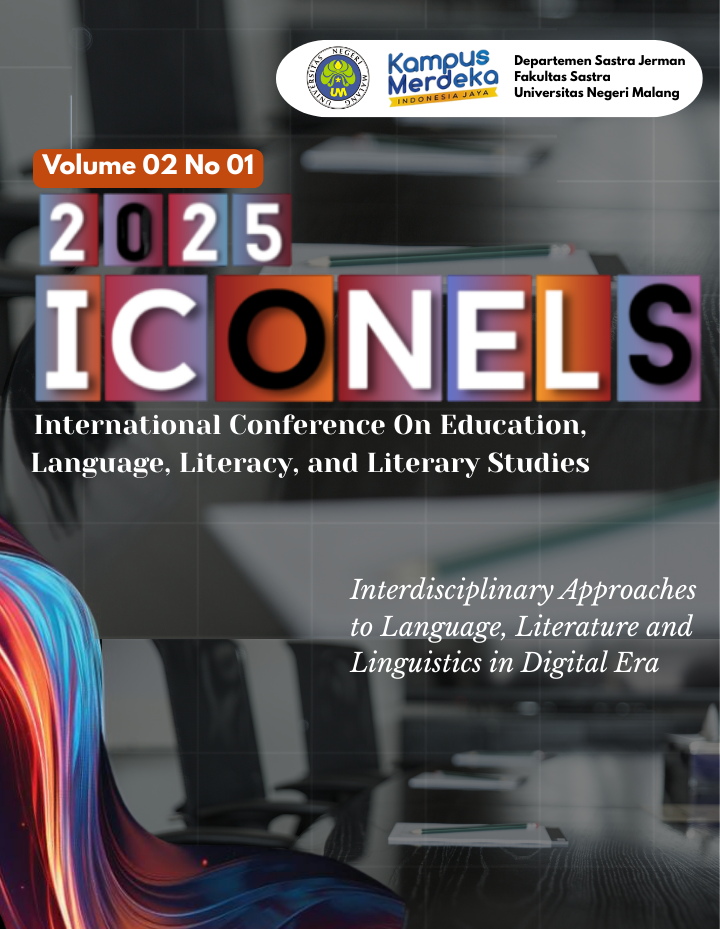Documentation of Low-Resource Languages in Southern China in the Digital Era:Interdisciplinary Fieldwork, Practice, and Values
DOI:
https://doi.org/10.63011/iconels.v2i1.97Keywords:
Low-resource languages, Language documentation, Documentary linguistics, Interdisciplinary approach, Tai-Kadai languagesAbstract
In the digital era, documenting low-resource languages in Southern China, especially minority and endangered languages in Southwest China, is of great significance. These languages, embodying distinctive cultural heritages and cognitive systems, are under threat from language shift and modernization. Rooted in documentary linguistics—a newly born and still growing field dedicated to comprehensively documenting languages through digital media technologies for dynamic recording, long-term preservation, and easy accessible dissemination—for about two decades, we have conducted a couple of projects in documenting several languages or dialects of the Tai-Kadai family, utilizing interdisciplinary fieldwork to preserve linguistic data and cultural heritages embedded in these languages, thus obtaining some achievements in language preservation and revitalization, enriching global linguistic diversity and cultural heritage.
This comprehensive interdisciplinary approach, aligned with documentary linguistics’ methodologies of participatory recording and cross-disciplinary data integration, not only comprehensively documents language data but also integrates diverse cultural knowledge, bridging the gap between linguistics and other disciplines. It provides a new model for low-resource language documentation, highlighting the value of preserving linguistic and cultural diversity, and offers essential data for language preservation and research, cultural inheritance, and community development.
References
Cablitz, Gabriele. (2011). Documenting Cultural Knowledge in Dictionaries of Endangered Languages. International Journal of Lexicography, 24(4), 446-462. https://doi.org/10.1093/ijl/ecr017
Constance, Holden. (1991). Endangered Languages. Science, 251(4990), 159.
Dorian, Nancy. (2010). Language and responsibility. Language&Communication, 30, 179-185.
Ethnologue—Languages of the World. (2025). How Many Languages Are There In the World? [Data set] . Summer Insitute of Linguistics Internation. https://www.ethnologue.com/insights/how-many-languages/
Fan, Junjun. (2022). The Building of Digital Museum for Endangered Language. Museum Management, 4, 45-55.
Himmelmann, Nikolaus. (1998). Documentary and Descriptive Linguistics. Linguistics, 36, 161-195.
Hinton, Leanne. (2010). Language Revitalization in North America and the New Direction of Linguistics. Transforming Anthropology, 18(1), 35-41. https://doi.org/10.1111/j.1548-7466.2010.01068.x.
Huang, Chenglong. (2024). Linguistic Fieldwork and Research in the Era of Digital Intelligence—Documentary Linguistics: The State of the Art. Journal of International Chinese Teaching, 1, 3-12. https://doi.org/10.3969/j.issn.2095-798X.2024.01.002
Mithun, Marianne. (2007). What is a language? Documentation for diverse and evolving audiences. Language Typology and Universals, 60(1), 42-55. https://doi.org/10.1524/stuf.2007.60.1.42
Nathan, David. (2008). Minding Our Words: Audio Responsibilities in Endangered Languages Documentation and Archiving. Taiwan Journal of Linguistics, 6(2), 59-78. https://doi.org/10.6519/TJL.2008.6(2).3
Spector, Violette. (2025). AI in Language Preservation: Safeguarding Low-resource and Indigenous Languages. https://www.welocalize.com/insights/ai-in-language-preservation-safeguarding-low-resource-and-indigenous-languages/
Uribe-Jongbloed, Enrique. Endangered languages: Heritage of humanity in dire need of protection. Folios, 65-70. https://doi.org/10.17227/01234870.26folios65.70
Downloads
Published
Issue
Section
License
Copyright (c) 2025 Yancheng He, Zhiwei Xu

This work is licensed under a Creative Commons Attribution-NonCommercial-ShareAlike 4.0 International License.



